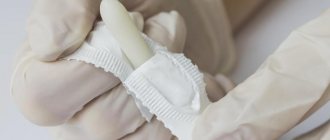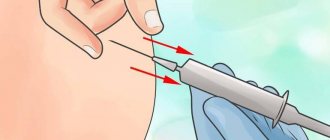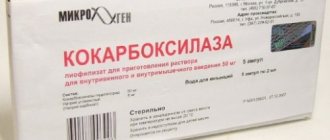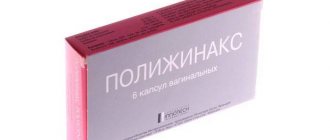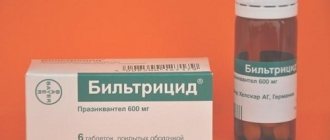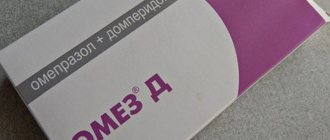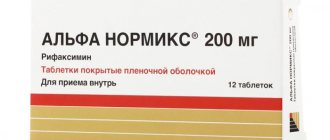As the instructions for use indicate, the drug Galavit suppositories is a modern immunomodulator.
Thus, these rectal suppositories are the only combination drug to date that has an anti-inflammatory as well as an immunomodulatory therapeutic effect.
According to statistics, more than 40% of adults today suffer from various infectious diseases of the reproductive and genitourinary systems.
To treat such groups of diseases, a variety of drugs can be used, and Galavit suppositories are rightfully considered one of the most effective means for this purpose. Reviews of women and men about the effect of this product can be found on numerous forums.
Compound
The main active ingredient of Galavit is aminodihydrophthalazindione sodium. It is with the help of this synthetically derived pharmacological substance that the therapeutic effect of the drug is achieved.
Release form
Galavit suppositories are available in the form of rectal suppositories, which can be presented in dosages of 100 and 50 mg. At the same time, the drug dosage of 100 mg is intended for adolescents and adult patients, and suppositories of 50 mg are intended for the treatment of children. Galavit suppositories are presented in sealed packages of 10 pcs. in each.
This amount of the drug is quite enough for a minimum course of therapeutic therapy. The price at the pharmacy for different forms of the drug may vary slightly.
It is also important to note that the instructions for the drug do not contain a description of the possibility of using Galavit vaginally in gynecology, so it can only be used rectally.
pharmachologic effect
Galavit in the form of suppositories helps increase cellular immunity in humans. With its help, inflammation processes in prostatitis and other common diseases of the genitourinary system are reduced.
Additional therapeutic effects of this drug are:
- Reduced activity of macrophages, which are invariably observed during inflammatory processes.
- Reducing body intoxication.
- Promoting the body's defense against infectious diseases.
- Activation of cellular compounds that are aimed at suppressing the activity of pathogenic microorganisms.
- Protective effect on the liver.
- Pronounced strengthening therapeutic effect.
Pharmacodynamics and pharmacokinetics
After the first use, the drug begins to have a therapeutic effect, which lasts for another three days. After penetration into the blood, the active substance of the suppositories affects the source of inflammation and effectively suppresses it. The drug is excreted through feces and kidneys.
Thanks to its wide therapeutic spectrum of action, Galavit, like most of its analogues, can be used to treat a wide variety of diseases, such as HPV, herpes, hemorrhoids and others.
Pharmacological properties of the drug Galavit
Pharmacodynamics . Galavit (5-amino-1,2,3,4 tetrahydrophthalazine-1, 4-dione sodium salt) has anti-inflammatory and immunomodulatory properties. Its main properties are due to its ability to influence the functional and metabolic activity of macrophages. In inflammatory processes, the drug reversibly inhibits for 6–8 hours the excessive synthesis of tumor necrosis factor, interleukin-1, reactive oxygen species by hyperactive macrophages, which determine the degree of activity of inflammatory reactions, their cyclicity, as well as the severity of intoxication. Normalization of the functional state of macrophages leads to a decrease in autoaggression and restoration of T-lymphocyte function. At the same time, the drug stimulates the microbicidal system of neutrophil granulocytes, accelerates phagocytosis and increases the body's nonspecific resistance to infectious diseases. The main pharmacological effects of the drug last for 72 hours. Pharmacokinetics . Galavit is excreted from the body primarily by the kidneys. After intramuscular injection, the half-life is 15–30 minutes; after rectal use, it is 60–70 minutes.
Analogs
The drug has no direct analogues for the active component. If there is a need to replace it for one reason or another, according to a medical decision, you can take another form instead of the prescribed one. For example, if tablets were prescribed, they can be replaced with suppositories.
There are a large number of drugs available in pharmacies that have similar immunomodulatory properties, but most of them are expensive. Such drugs include Alokin alpha, Gepon, Immunomax, etc. In addition, children can be prescribed Anaferon for children, and adults Immunoflazid, Lavomax, Lynchi, Imunoplus, etc.
Indications for use of the drug Galavit
Prescribed to adults as an immunomodulator as part of complex therapy:
- for acute and chronic diseases of the gastrointestinal tract, accompanied by intoxication and/or diarrhea (acute intestinal infections, gastric and duodenal ulcers, ulcerative colitis, Crohn's disease, liver damage of various etiologies, including viral hepatitis B and C, gastroenteritis);
- for acute infectious diseases (intestinal infections, purulent meningitis);
- bronchitis, pneumonia, septic conditions, post-traumatic osteomyelitis, erysipelas;
- for diseases of the genitourinary tract (genital herpes, cytomegalovirus infection, chlamydia, mycoplasmosis, uterine fibroids, benign prostatic hyperplasia);
- for purulent-septic processes in the pre- and postoperative period and for the prevention of infectious surgical complications;
- for chronic recurrent herpes infection;
- with chronic recurrent furunculosis;
- for chronic inflammatory diseases that develop against the background of secondary immunodeficiency;
- for immunocorrection and immunological rehabilitation for oncological diseases, such as stage III disseminated breast cancer, stage III lung cancer (as part of complex chemotherapy and radiation therapy).
Contraindications
One of the main factors that may be a sufficient basis for refusing to prescribe the drug is individual intolerance to the constituent components of the drug. If the patient has previously experienced allergic reactions to certain substances of certain medications, then before prescribing Galavit, you need to carefully read the instructions. If you notice any side effects after taking the drug, for example, itching, rash, you should immediately stop using it and see a doctor.
Another absolute contraindication to the use of Galavit is pregnancy and lactation. Considering that experts have not studied the effectiveness and impact of the drug “Galavit” on the body of women during childbearing and feeding, the use of this drug is contraindicated for them.
Although sometimes a gynecologist may decide to prescribe this drug during pregnancy. He can take such a step in a situation where a young mother is struck by a serious illness and requires immunomodulators. In this case, she should be regularly monitored by a specialist. It is forbidden to take Galavit on your own during pregnancy and breastfeeding. Due to the lack of data on the use of the drug "Galavit", suppositories can only be used vaginally by the rectal route.
The drug should not be prescribed to children under 6 years of age. This contraindication applies to all pharmacological forms of the drug available in pharmacies with the exception of tablets, which are not prescribed to children under 12 years of age. Since experts have not conducted clinical studies regarding the effects of this drug on patients of these age groups, it is best not to prescribe Galavit for treatment.
Use of the drug Galavit
Galavit for injection Injected intramuscularly. Before use, the drug is diluted in 2 ml of water for injection or 0.9% sodium chloride solution. The dose and duration of use of the drug depend on the nature and severity of the disease. For acute intestinal infections (salmonellosis, dysentery, food poisoning) and other diseases accompanied by diarrhea , the initial dose for adults is 200 mg. Then the drug is administered in a dose of 100 mg 2-3 times a day until the symptoms of intoxication disappear. In the acute period of the disease, as a rule, 2-3 injections are sufficient. For infectious diseases of various etiologies ( including septic conditions, hepatitis, meningitis), the initial dose for adults is 200 mg. Then they switch to administering the drug at a dose of 100 mg 2–3 times a day until the symptoms of intoxication and inflammation disappear, then it is possible to continue the course of therapy at a dose of 100 mg once every 2–3 days. The duration of the course depends on the patient’s condition and can be up to 25 injections. For diseases of the gastrointestinal tract (stomach and duodenal ulcers, nonspecific ulcerative colitis, Crohn's disease ) and genitourinary system, the initial dose for adults in the acute period is 200 mg once a day for 1–2 days, then switch to administering the drug at 100 mg 1 once every 2–3 days. The course of treatment is 15–25 injections, depending on the course of the disease. For uterine fibroids, 100 mg/day is prescribed daily for 5 days, then 5 injections of 100 mg every other day, then 100 mg once every 2–3 days. The course of treatment is 15–20 injections. For benign prostatic hyperplasia in adults, 100 mg/day is prescribed daily for 5 days, then 100 mg once every 2–3 days. For purulent-septic processes in the pre- and postoperative period, as well as for the prevention of postoperative infectious complications in adults, 100 mg of the drug is prescribed before or after surgery once a day for 5 days, then 5 injections of 100 mg every other day, subsequently - 100 mg every 72 hours; course of treatment - 15 injections. For chronic recurrent furunculosis in adults, 100 mg of the drug is prescribed daily for 5 days, then 15 injections of 100 mg every other day. The course of treatment is 20 injections. For chronic recurrent herpes infection (as part of complex therapy), 100 mg/day every other day (15–20 injections) or 100 mg/day daily for 10 days is prescribed, then 100 mg every other day (15 injections). The course of treatment is 20 injections. For chronic inflammatory diseases that have developed against the background of an immunodeficiency state, adults are prescribed 100 mg once every 3 days or 100 mg daily for 5 days, then once every 2-3 days. The course of treatment is 20 injections. For immunocorrection for cancer: stage III breast cancer, stage III lung cancer (in combination with chemotherapy and radiation therapy) for adults, the initial dose is 100 mg once a day for 5 days, then 100 mg every 72 hours. The course of treatment is 20–30 injections. Galavit rectal suppositories Suppositories are freed from the contour cell packaging and inserted into the rectum. It is recommended to have a bowel movement before doing this. The dose and duration of use of the drug depends on the severity and duration of the disease. For infectious diseases of various etiologies (including septic conditions, hepatitis B and C, meningitis), the initial dose for adults is 0.2 g. Then they switch to administering the drug 0.1 g 2-3 times a day until the symptoms of intoxication and inflammation are eliminated, then it is possible to continue the course of therapy with the drug at a dose of 0.1 g once every 2–3 days. The duration of the course depends on the patient's condition (up to 25 suppositories per course). For diseases of the gastrointestinal tract (gastric and duodenal ulcers, nonspecific ulcerative colitis, Crohn's disease) and genitourinary system, the initial dose for adults in the acute period is 0.2 g 1 time per day for 1–2 days, then switch to administering the drug at 0 .1 g 1 time every 2–3 days. The course of treatment is 15–25 suppositories, depending on the patient’s condition. For uterine fibroids , 0.1 g/day is prescribed daily for 5 days, then 0.1 g once every 2–3 days. The course of treatment is 15–20 suppositories. For benign prostatic hyperplasia, the drug is prescribed daily at 0.1 g/day for 5 days, then 0.1 g once every 2–3 days. For purulent-septic processes in the pre- and postoperative period, as well as for the prevention of postoperative infectious complications in adults, 0.1 g of the drug is prescribed before or after surgery 1 time per day for 5 days, then 0.1 g every other day (5 suppositories), subsequently - 0.1 g every 72 hours; course of treatment - 15 suppositories. For chronic recurrent furunculosis, adults are prescribed 0.1 g once a day daily in the first 5 days, then 0.1 g every other day. The course of treatment is up to 20 suppositories. For chronic recurrent herpes infection: adults in the first 10 days - 0.1 g once a day, then 0.1 g every other day. The course of treatment is up to 25 suppositories. For chronic inflammatory diseases that have developed against the background of an immunodeficiency state, adults are prescribed 0.1 g once every 3 days or 0.1 g daily for 5 days, then once every 2-3 days. The course of treatment is 20 suppositories. For immunocorrection for cancer: stage III breast cancer, stage III lung cancer (in combination with chemotherapy and radiation therapy) for adults, the initial dose is 0.1 g every other day (5 suppositories), then 0.1 g at intervals 72 hours. Course of treatment: 20–30 suppositories.
Composition and release form
Galavit is produced in three dosage forms:
- Round tablets, white or yellowish in color with a menthol odor. Designed for absorption under the tongue. The drug is packaged in boxes of 10–80 units each.
- Rectal suppositories, shaped like a torpedo. They are white or yellowish in color. The package contains 5–10 units.
- Powder used for intramuscular administration. Packaged in sealed glass bottles. The package contains 3–5 bottles.
The active ingredient of the drug is sodium aminodihydrophthalazindione. Its content in different forms of the drug varies markedly.
In tablets - 25 mg of the active substance, suppositories and powder, depending on the dosage indicated on the package - 50 mg or 100 mg.
The powder contains no excipients. Suppositories contain glycerides of fatty acids. The tablets contain starch, talc, menthol, lactose, sorbitol and calcium stearate. Each package contains instructions that describe indications for use, dosage, and contraindications.
The medication should be stored in a dark place at an air temperature of +15-25 degrees Celsius. You should choose a place that small children cannot reach. Depending on the dosage form, the medicine is stored for three to four years.
Side effects
Before being released onto the pharmacy market, the drug underwent many clinical trials, during which it proved to be a fairly safe drug. And although most patients tolerate it quite well, some may experience allergic reactions . Therefore, people who are prone to allergic reactions are not recommended to use the drug on their own without first consulting a specialist. First of all, this applies to the injection form.
If any side effects are detected as a result of using the drug, the patient should stop using it and see a doctor immediately.
